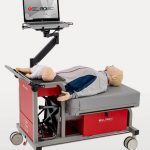Drowning affects people of all ages all over the world. In the United States alone, more than 4,000 people drown unintentionally each year.
How rescuers respond during drowning resuscitation efforts can make a difference between life and death, regardless of whether treatment is administered in or out of a hospital. Focusing on rescuers' role and the importance of ongoing CPR education is essential to improving outcomes for drowning victims.
Prevalence of Drowning Incidents
Drowning is a significant public health concern nationwide. An average of 4,083 fatal unintentional drownings occurred each year between 2012 and 2021. This equates to around 11 drowning deaths every day.
While drowning can happen to anyone at any time, incidents primarily affect children. In fact, drowning is the No. 1 cause of death for children ages 1 to 4, and it's the second leading cause of death for kids ages 5 to 14. Additionally, for every child who dies from drowning, another seven receive emergency department care for non-fatal drowning injuries.
Drowning incidents spike during the summer when people are more likely to swim, boat or participate in other water-related activities. Coastal states, such as Hawaii, Alaska, and Louisiana, report the highest numbers of drowning cases, likely due to their extensive coastlines and warm climates that support water recreation. These statistics underscore the importance of being vigilant and prepared during peak times and in high-risk areas.
Understanding the Chain of Survival
The chain of survival outlines the critical steps necessary to improve outcomes for drowning victims. This chain includes early recognition of the emergency, prompt initiation of CPR, rapid defibrillation if needed, effective advanced life support and integrated post-cardiac arrest care. Each link in the chain is essential — any weakness in any of the steps can reduce the chances of a positive outcome.
For hospital providers, maintaining the integrity of the chain of survival means being prepared at every stage. This preparation involves not only individual competency in performing CPR but also a system-wide commitment to ensuring protocols, equipment and training are always up to date.
The Critical Role of Fast Response and CPR
When a drowning occurs, the speed and quality of the response can make all the difference. Brain damage begins within minutes of submersion. Immediately initiating CPR can significantly improve the chances of survival and reduce the risk of long-term neurological damage.
High-quality CPR is essential in both out-of-hospital and in-hospital settings. It involves providing chest compressions at the correct depth and rate, allowing full chest recoil between compressions and giving proper ventilation.
For bystanders, particularly parents and guardians who are often the first to recognize a drowning incident, knowing how to perform CPR can be a lifesaving skill. Studies have shown that bystander CPR almost doubles the chances of survival after sudden cardiac arrest.
How Hospital Systems Can Prepare for Drowning Cases
Hospital systems — especially those in high drowning incident areas — must be well prepared to handle drowning cases, especially during the summer when they're more likely to occur. Successful drowning resuscitation preparation involves several key components.
Ongoing CPR Education
Continuous training and education for hospital staff are critical. The American Heart Association recommends regular CPR certification and recertification courses to ensure all healthcare providers are proficient in the latest resuscitation techniques. Simulation-based training can also be effective in preparing staff for real-life scenarios.
Readily Available Equipment
Hospitals should ensure resuscitation equipment, such as defibrillators and oxygen delivery systems, is easily accessible and in good working condition. Having specialized equipment for pediatric patients is also important, as children are at a higher risk of drowning.
Clear Protocols
Establishing and maintaining clear protocols to treat drowning patients can help streamline the response process and improve patient outcomes. These protocols should include guidelines for triage, immediate medical intervention and post-resuscitation care.
Community Engagement
Hospitals can play a vital role in community education and prevention efforts. Partnering with local organizations to provide CPR training to parents, guardians and the general public can help increase the number of people prepared to respond to drowning emergencies.
Keep CPR Skills Sharp to Prevent Drowning Deaths
Drowning is a preventable tragedy that affects thousands of families each year. By understanding the prevalence of drowning incidents and strengthening each link in the chain of survival — especially high-quality CPR — rescuers can improve drowning victims' chances of survival and recovery.








